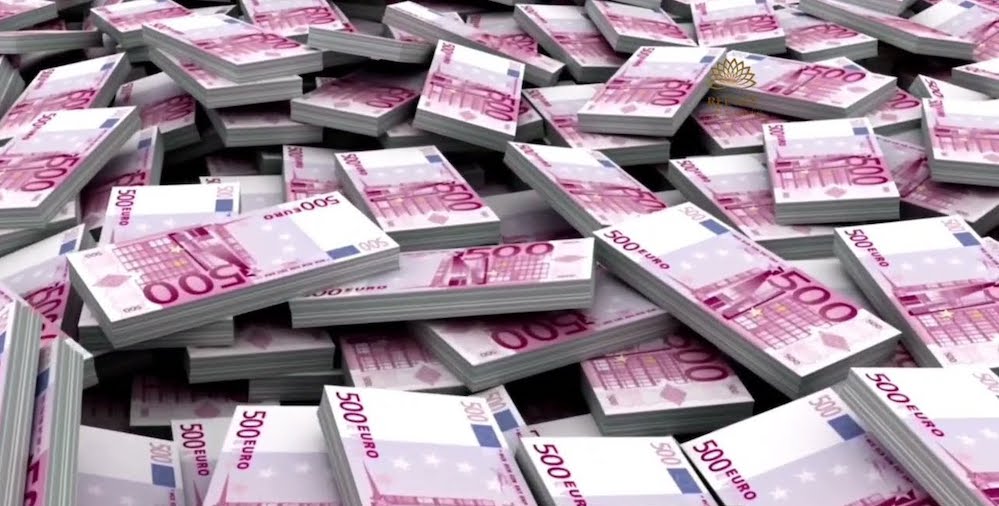(Editor’s note: The Eindhoven Business Briefing is part of our Tech Tuesday series. We cover tech because so many of our highly skilled internationals are engineers, physicists and entrepreneurs.)
The biggest news this year is the 2.5 billion euros the outgoing caretaker Dutch government bequeathed to Eindhoven to fund Operation Beethoven, the Brabant region’s plan to help keep ASML. While the funding is remarkable, the question is, “Is there an actual plan?” If there is, we can’t find it.
We asked to interview Mayor Jeroen Dijsselbloem, but he declined through his spokesperson. “I’m afraid we’re not able to say yes to all media requests for Mayor Dijsselbloem that come up due to the latest developments. So, I’m afraid we have to kindly decline your offer,” wrote René van den Nieuwenhof in an email.
So, we are left with reading the news coverage and talking with former ASML executives.
Here’s what we know.
• A projected half of the funding will go to improved mobility, which we heartily support. Brainport has announced an underground bus station under the existing central train station, express buses running to ASML and Technical University of Eindhoven and a wider A2 fast road.
• Infrastructure upgrades would make possible construction of 20,000 homes in the area north of centrum.
• A proposed 50 million euros will go to retraining and upskilling Dutch workers and 150 million euros to upgrade schools in primary and secondary education.
Of course, all of this has been on the planning boards for years … and exactly none of it has happened.
A plan that includes more buses in 2024 while Amsterdam, Rotterdam and Den Haag have trams and subways only points up that Eindhoven is still a village with an outsized tech sector.
Yet another issue is, TU/e is not flush like universities in the U.S. That’s because rich alumni in the Netherlands can’t endow state-run universities. In the United States, Harvard alone has a $50 billion (billion with a “b”) endowment. Stanford has $36.5 billion. That means they can add facilities and professors in engineering and physics at will and fund scholarships for the top students. That mechanism helps puts the U.S. at the top of the tech world.
Here, the Dutch government determines how much funding each of the four engineering schools – Delft, Eindhoven, Twente and Groeningen – receive and what they do with it.
With a population of only 17 million or 18 million and four engineering schools, the Netherlands can’t educate a sufficient number of engineers to meet the demand of its deep-tech companies. The Netherland’s isn’t even in the Top 20 globally for number of engineers coming out of universities.
The U.S. state of Indiana alone, population 7 million, has 10 engineering schools, including Purdue, Indiana and Notre Dame.
Pakistan, for God’s sake, produces more engineers.
When we talked with former ASML personnel, half thought ASML would leave and half thought it would stay.
Bottom line is, and as we’re so fond of saying, “There is always a bottom line,” our money is on ASML to pull a Philips. The best case scenario is that ASML moves to Rotterdam or Amsterdam. Worst case scenario? Well, there are only three countries in the world with the talent and capital to support ASML as it scales – the United States , South Korea and Taiwan.
Meanwhile, in Eindhoven, nothing has really changed: The parties that will lead the next government oppose international talent, especially the Geert Wilder’s Party for Freedom. New local edicts will block foreign students from Dutch universities.
The Brabant ruling class is ill prepared for all this, with no sense of urgency, no real connection to ASML and no fundamental understanding of what Europe’s most valuable tech company even does or its importance to the world economy, which will always need more and faster chips.
Worse than that, Den Haag seems only too happy to fund a plan that doesn’t exist and would take a decade to execute if it did.
The Americans, on the other hand, increasingly see securing access to the semiconductor industry (including ASML’s supply chain) as crucial to U.S. national security, especially now with Israel under direct attack from China-backed Iran. The question is, are the Americans willing to throw a substantial amount of the $39 billion CHIPS Act at attracting ASML?
In business, there is no sentiment or loyalty. Witness Philip’s departure to Amsterdam in 1998.
Here’s how outgoing ASML CEO Peter Wennink puts it:
We are a company, we are a global company. We will go where we need to go to make sure the company can grow and service our customers. If the Netherlands shuts down because we cannot get immigrants or foreign students, fine. You have to accept the consequences.
The consequences would include losing the most valuable company not just in Europe, but in the entire global semiconductor industry. If you want to understand how important ASML is, and how much of a fluke that it’s even in Eindhoven, check out this post in the MIT, “How ASML took over the chipmaking chessboard.”

Live, work and play on High Tech Campus
Twenty twenty-four marks the 25th anniversary for High Tech Campus Eindhoven. ASML is Eindhoven’s tech touchstone, but the campus is the geographical center of the European tech ecosystem.
In an interview with Bart Brouwers at Innovation Origins, campus CEO Otto van den Boogaard said that along with a physical expansion, campus administrators want Europe’s largest R&D campus to be more vital to people who work there, to potential tenants and to the community at large.
Van den Boogaard talked about:
• Housing. Something we knew as a Campus vendor but couldn’t reveal is that Campus officials are considering adding “several hundred” units of long-term rentals.
From the interview:
“Consider stays ranging from a week to six months, as many of our companies have a great need for this, especially for their new employees coming from abroad or for temporary colleagues who are only here for a project,” van den Boogaard said. “Apart from our own needs, such a facility would also fit beautifully into the larger picture of housing demand in our region.”
• More construction. The new 11-story Lucis One is nearly complete. There’s still room for around 80,000 to 100,000 square meters of new build. Van den Boogaard said Campus management will continue updating existing buildings and adding cleanrooms and other technical spaces.
• Night life. There is already a push to make the center of Campus the gathering point for the 13,000-plus people working at HTCE now. “We want to offer that pleasant environment even after working hours. Think of restaurants with longer opening hours, a cinema, lectures, perhaps concerts,” van den Boogaard said. “Eating, drinking, and networking are just as much part of our concept as the development of a new photonic chip. This also helps in ‘turning technology into business.’ ” Besides evenings, van den Boogaard thinks the Campus could also open more frequently on Saturdays. Currently, there are occasional cycling or running races, but every week there are people who want to play cricket or a game of padel at the new courts, he said.
LA-based Oaktree Capital Management and the Government of Singapore Investment Corporation own HTCE in a partnership. Clearly, the goal is to read the tea leaves and stay ahead of what’s coming in tech. The Campus has added innovation hubs for AI, 5G, workplace vitality and spatial computing/VR while keeping legacy tenants such as NXP, Signify and ASML, which has a small presence on Campus.
Speaking of Singapore, its state investment company, Temasek, plans to invest more in European companies focused on sustainability, pharmaceuticals and biotechnology.
The company has opened a new office in Paris, Temasek stated, adding to its locations in London and Brussels. Its has an $18 billion war chest to invest in privately held European companies, according to media reports.

Briefs:
From Councilman Stijn Steenbakkers:
Start of construction of towers EDGE Eindhoven on the south side of the station in Gemeente Eindhoven will start on 3 June. Mixed use with + 175 homes and 25,000 m2 of office space. 💪 After an intensive process of years, a lot of planning and renegotiations due to, among other things, delays at the Council of State, interest rate developments and inflation, we are finally going to see the first cranes on the south side of Knoop XL. All partners (developer, investors, builders) have contributed to this and the municipality is also making a final move in the context of the ‘Eindhoven Builds through’ programme of colleague Mieke Verhees.
You can see more here on Steenbakker’s LinkedIn page.














